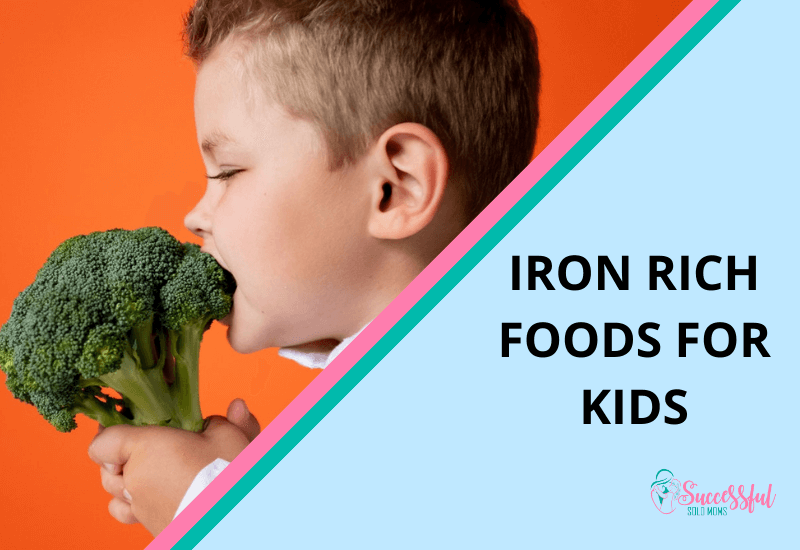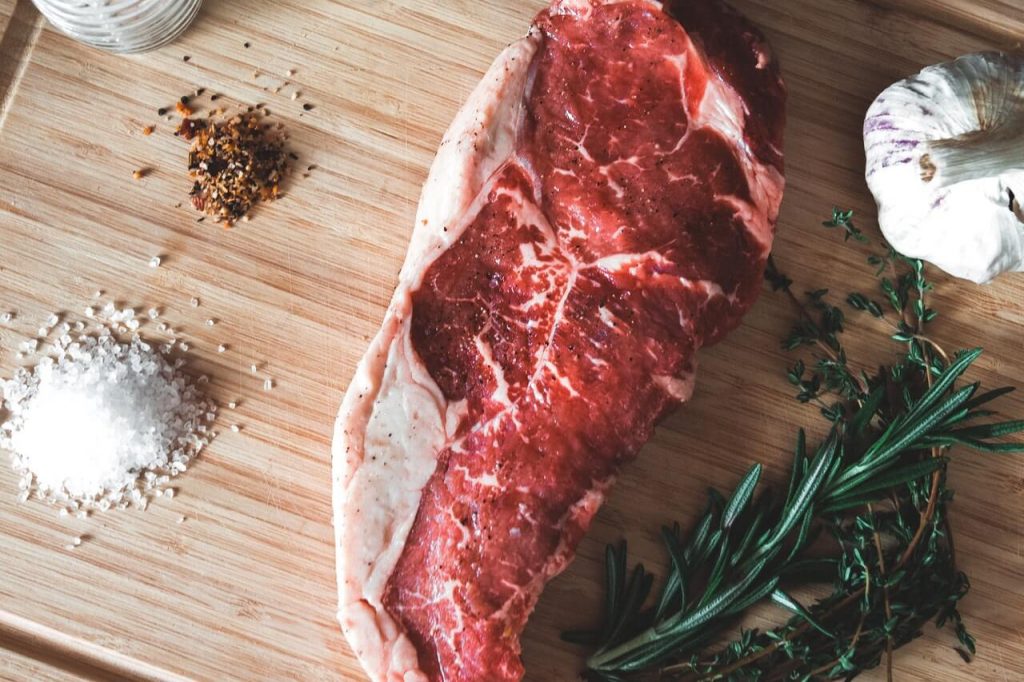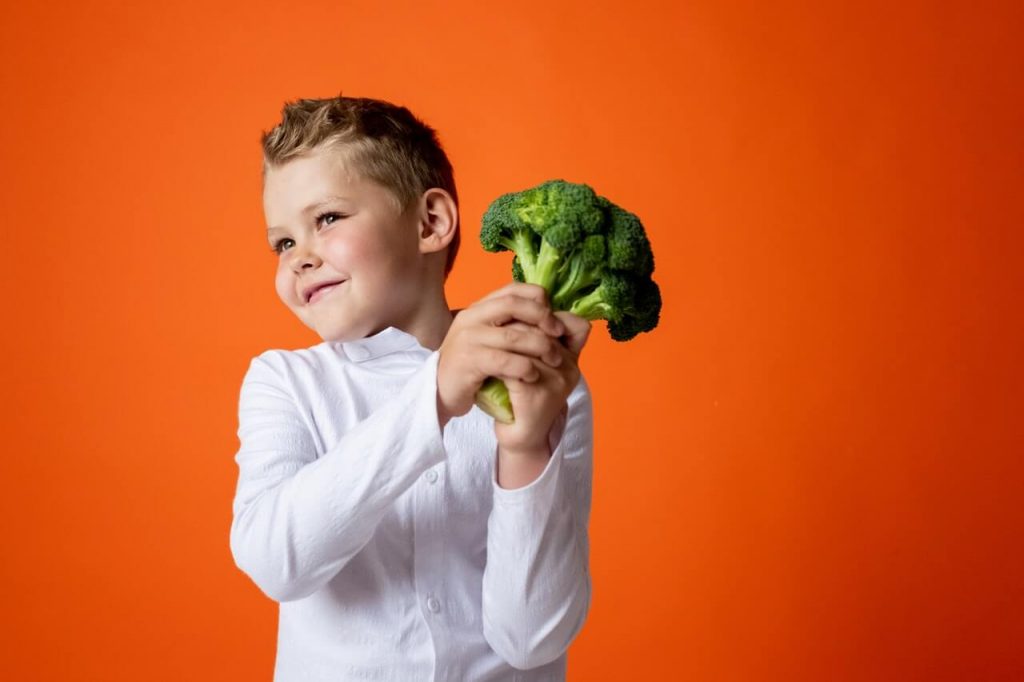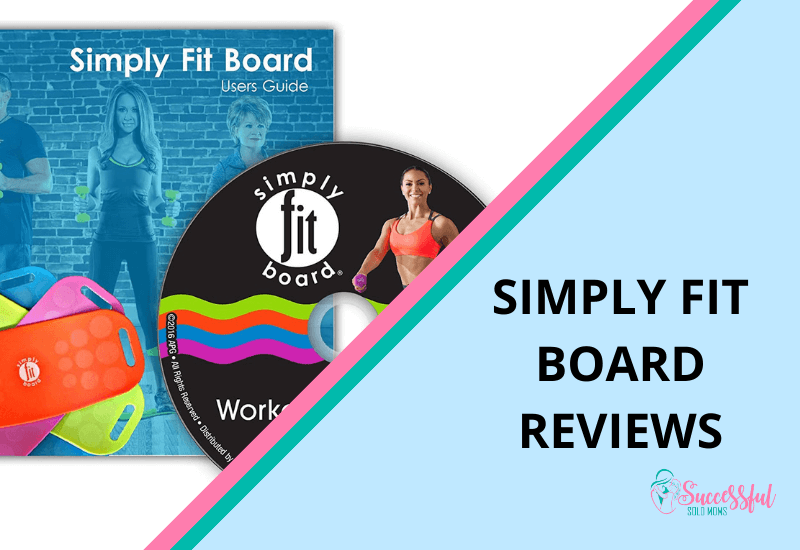
Iron Rich Foods For Kids
A healthy diet is absolutely essential to any growing child. From the ages of 7 months to approximately 18 years old, children grow rapidly. Deficiencies in particular nutrients or vitamins can have a disastrous effect on both a child’s mind and body.
Proper levels of these nutrients and vitamins can easily be found in our diet – presuming we’re eating the right things.
As parents, it’s our job to make sure our family is eating well. A properly balanced diet is even more important for a child who is growing and changing at an alarming rate than it for an adult.
However, that doesn’t mean it’s easy. In fact, it can be very difficult to make sure our children are getting the nutrients they need.
This could be because our child is a picky eater, and every mealtime is a battle overeating vegetables. We might be working with a budget and find that we’re struggling to make every meal a healthy one.
Unfortunately, unhealthy junk food tends to be the cheaper, easier option. Cooking well-balanced and healthy meals tends to require more preparation and work than simply buying processed, fast food at a supermarket.
It could also be that we aren’t sure what foods are best for our growing children. Not every healthy food contains the right balance of vitamins. Also, some foods work best paired with others to help the nutrients absorb better into our bodies.
Vegans and vegetarians also need to give special thought to their diet and that of their children. Meats and dairy can be a good source of iron and other vitamins, and if those foods are missing from your diet, you will need to find those nutrients elsewhere.
While there are a variety of vitamins and nutrients a child needs in their diet, today, we’ll just look at one: Iron.
How much iron your child needs will vary. A baby of 7-12 months requires 11mg of iron. From 1-3 years, a toddler needs 9mg. From 4-8 years, a child needs 10mg and then 9mg until the age of 13. This is a recommended daily amount that is necessary for your child’s growth and wellbeing.
#1 Red meat
Red meat is generally considered the number one source of iron. Iron found in meat is known as heme iron, which is the type most efficiently absorbed by the body.
Meat is often a staple in many people’s diets, meaning that there’s a wide variety of recipes and ways of cooking meat to make it palatable to your fussy children. For instance, ground beef can be the basis for many easy and delicious meals without having to struggle through chunks of chewy meat.
Red meat also contains zinc and protein, necessary parts of a balanced diet. It’s an important food for those suffering from anemia since taking in iron via red meat and diet is more effective than taking iron supplements.
However, there are downsides to this. Vegetarians and vegans will need to find alternative sources of iron. In addition, poorly cooked meat can easily be chewy, dry, and tasteless. Cooking foods that your children will enjoy eating is really the simplest way of getting the right amounts of iron into their bodies, and a tough steak that’s difficult to cut and harder to chew simply won’t achieve that.
#2 Beef and chicken livers
Liver is a very tricky food. Many adults simply won’t eat liver, let alone a child. The flavors can be strong and unpalatable, especially chicken livers. However, if your children do happen to enjoy liver, this is a very good source of iron.
It can also be added to various dishes and recipes. It’s a good idea to introduce your child to different foods as often as you can, rather than narrowing the scope of what they will and won’t eat. Iron deficiencies are surprisingly common, simply because often, a person’s diet contains iron – but not enough.
However, it is advised for you to avoid eating liver during pregnancy.
#3 Fish and poultry
Aside from being a source of iron, fish contains other nutrients essential for healthy minds and bodies. Poultry tends to be a softer option in comparison with red meat and is also a source of iron. Iron is available in a variety of different fish, such as salmon, haddock, tuna, tinned sardines, and more.
Shellfish, such as mussels, clams, and oysters, are also a good source of iron, although these may not be ideal to serve to a young child. If you are eating shellfish, it’s important to be aware of the risks associated with such foods. Also, the amount of iron gained from shellfish can vary.
Even so, the benefits of eating properly prepared shellfish far outweigh the risks.
Chicken is another staple food for many people. It tends to be cheaper than red meat and often softer and easier to cook well. However, beware of poorly cooked chicken and the associated health risks. Turkey is also a good source of iron. Both of these meats can be very versatile, lending themselves to a variety of different dishes and preparation methods.
Poorly cooked poultry, however, can be dry and tasteless.
Again, these foods are unsuitable for vegetarians and vegans. Fortunately, there are other sources of iron available, although not quite as iron-rich as meats, which contain heme iron.
Vegetables, nuts, seeds, and legumes do contain iron, but it is non-heme iron. This iron is still absorbed into the body, but not as effectively as heme-iron. This can be combated by pairing the foods with other foods, which help the absorption of iron.
#4 Legumes
Legumes are a good alternative if your child doesn’t want to eat meat. Some types of legumes include beans, lentils, peas, chickpeas, and more. The beauty of legumes is that they have a variety of uses, and if your child doesn’t like one, you can always substitute it with some other type of legume.
Lentils are especially easy to slip into other dishes, meaning you don’t have to serve your child a bowl of lentils. They also work well with tomato-based sauces, citrus fruits, and greens. There are plenty of different types of beans to experiment with, and chickpeas are a delicious addition to most meals.
Peas are another popular type of legume, and there are plenty of different kinds of beans that contain high levels of iron.
As well as being high in iron, legumes also contain magnesium and potassium. They’re high fiber, meaning you’ll feel fuller for longer. Fiber is an important part of a healthy diet.
#5 Eggs
For many of us, eggs are a staple part of our diet. They’re cheap and easily accessible and have a huge variety of uses in recipes, baking, and quick, easy, day-to-day meals. Plus, egg yolks contain good amounts of iron.
Eggs are a relatively easy source of iron for your children. They’re so versatile you can serve up eggs for any meal of the day, even hidden inside a tasty breakfast (pancakes, anyone?).
You can pair up a meal like this with vitamin-C rich foods, such as fruits, fresh berries, or chia jam.
#6 Spinach and broccoli
This can be a particularly difficult vegetable to convince your children to eat. However, green leafy vegetables, especially spinach and broccoli, are tremendously high in iron. Just a 1 cup serving of broccoli contains up to 1mg of iron and 5g of fiber, and 100g of spinach contains 2.7mg of iron.
As well as this, broccoli and spinach contain vitamin C, which significantly increases iron absorption. Since this kind of iron is non-heme iron and isn’t absorbed so well into the body, these vitamin C levels are very useful.
There’s also evidence suggesting that cruciferous vegetables (like spinach and broccoli) help fight off cancer. Vegetables like this contain antioxidants known as carotenoids, which help reduce your risk of cancer.
If your children still turn up their nose at broccoli or spinach, try incorporating the vegetables into different dishes. Spinach, when cooked with other foods, can wilt, meaning it tastes and looks different. However, healthy iron and fiber content is still the same.
#7 Nuts and seeds
These include seeds such as pumpkin, sesame, sunflower, or squash seeds. For nuts, you could use peanuts, pecans, walnuts, pistachios, roasted almonds, or roasted cashews.
There are plenty of ways to incorporate these foods into your child’s diet. You could simply give them a handful of nuts as a snack. However, beware of choking hazards. Never give young children whole nuts.
Even if your child is too young to eat whole nuts, you can still use nuts and seeds in other ways. For example, you could add chopped nuts on top of granola or cereals, and you can bake with almond flour.
#8 Dried fruit
Dried fruit can often be very popular with young children. Fruit such as dried raisins and apricots tend to be sweet and often come in snack-size boxes, especially for children.
Of course, the same warnings apply; beware of choking hazards.
However, children do tend to enjoy dried fruit, and they’re a good source of iron. You can pair dried fruit with other foods, ideally vitamin C rich foods, which help with iron absorption.
You can also use dried fruits as a natural sweetener in baking and sprinkle a handful of dried fruit on top of granola or cereals.
Conclusion
Never underestimate the importance of feeding your child a properly balanced diet. Iron content isn’t the only concern; you should ensure your child has the proper daily amounts of vitamin C, protein, fiber, and much more.
However, you might find that your child still isn’t getting the proper iron levels despite your best efforts. There can be many reasons for this, but it’s important not to let an iron deficiency develop. It can lead to anemia, fatigue, and, if left unchecked, even more serious health concerns.
If your child has an iron deficiency, it’s a good idea to take a good look at their diet. What can be improved? What new foods could you introduce or add more of? Convincing children, especially young children, to eat more vegetables and healthy foods can be difficult, but don’t give up.
Another good idea is to try an iron supplement. There are many varieties available, and iron supplements designed for children are often chewable and flavored, making it much easier to get that daily serving of iron into your child.
For most of us, the foods listed above are widely available and reasonably priced. With a little research and effort, you can make delicious and well-balanced meals for yourself and your family.








